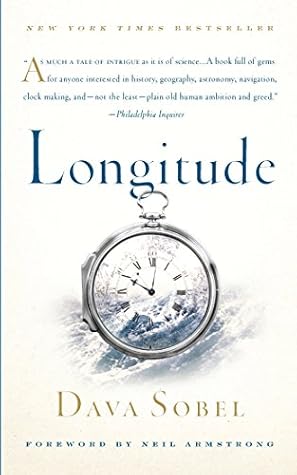More on this book
Community
Kindle Notes & Highlights
by
Dava Sobel
Read between
March 19 - March 25, 2018
A common misconception of his day held that anyone living below the Equator would melt into deformity from the horrible heat.
and the technique would doubtless have carried him to the Indies had not the Americas intervened.
To learn one’s longitude at sea, one needs to know what time it is aboard ship and also the time at the home port or another place of known longitude—at that very same moment. The two clock times enable the navigator to convert the hour difference into a geographical separation. Since the Earth takes twenty-four hours to complete one full revolution of three hundred sixty degrees, one hour marks one twenty-fourth of a spin, or fifteen degrees.
One degree of longitude equals four minutes of time the world over, but in terms of distance, one degree shrinks from sixty-eight miles at the Equator to virtually nothing at the poles.


